#Solar Power Net Metering
Explore tagged Tumblr posts
Text
Net Metering: Powering Homes or Hampering Solar Growth? Exploring Capping Net Metering
Net metering incentivizes solar energy adoption by allowing homeowners to credit excess solar power they generate back to the grid. However, some regions are considering capping net metering, limiting the amount of credit homeowners receive. This blog explores the debate surrounding net metering caps. We'll analyze the benefits of net metering for homeowners and utilities, delve into the rationale behind capping, and discuss the potential impact on the growth of solar power.

0 notes
Text
soooo excited for the solar company to Finally come today & figure out what is wrong w/ our solar panels
#keeping it fun and funky fresh#personal#looking at the data from previous years they should be almost entirely covering our electric bill#and they're not#not even close#they're operating at like 1/6 that capacity. sooooooooo we are paying a Lot more for electricity than we should be#to the point that the power company (who does net metering) emailed us and was like ''hey... what is going on...''#(the solar company does Not monitor the panels it installs & takes its SWEET FUCKING TIME getting back to you)#(it's been like two months)#our house in the middle of our street
5 notes
·
View notes
Text
Punarvi Energies is one of the best solar companies in Hyderabad, offering reliable and affordable solar energy solutions for homes, businesses, and industries. With a focus on quality, innovation, and sustainability, Punarvi Energies provides end-to-end services including solar panel installation, maintenance, and customized solar power systems. Backed by a team of experts, the company ensures high efficiency and long-term savings. Choose Punarvi Energies for clean, green, and cost-effective energy solutions in Hyderabad.
#solar panels#solar#solar energy#solar power#solar pv#renewableenergy#solar technology#off grid#solar installation#cleanenergy#greenpower#net metering
1 note
·
View note
Text
0 notes
Text
Solar Dreams Dimmed: Pakistan’s Big Buyback Slash
Hey, friend! So, imagine we’re grabbing coffee, and you ask me, “What’s up with Pakistan and solar power lately?” Well, buckle up, because the government just dropped a bombshell that’s got everyone from rooftop solar enthusiasts to grid-reliant folks buzzing. According to Dawn News, Pakistan’s Economic Coordination Committee (ECC) has slashed the buyback rate for solar net-metering from Rs27 to…
#economic coordination committee#energy policy#grid consumers#meditation#net-metering#Pakistan politics#poem#poetry#renewable energy#renewable-energy#silence#WordPress Tags: solar power
0 notes
Text
Why Solar Net Metering in India is Important
Solar net metering is a key driver of India’s clean energy transition. It allows businesses and industries to offset their electricity bills by exporting excess solar power back to the grid. Here’s why it matters:
Reduces Energy Costs – Businesses can significantly lower their electricity expenses by using solar power and earning credits for surplus energy.
Encourages Renewable Energy Adoption – Net metering makes solar investments more attractive, encouraging more businesses to switch to clean energy.
Supports Grid Stability – Feeding excess solar power into the grid helps balance supply and demand, improving overall energy efficiency.
Accelerates India’s Green Goals – As the country pushes for sustainability, net metering plays a vital role in meeting renewable energy targets.
Empowers Businesses – Companies gain more control over their energy consumption, reducing dependence on conventional power sources.
With net metering, solar energy becomes a smart and rewarding choice for businesses in India.
Ready to unlock the full potential of solar net metering? 🌞 Discover how it can reduce your energy costs and boost sustainability. Read the full blog now! https://sunphotonics.com/solar-net-metering-in-india-works-benefits-2025/
0 notes
Text
Michigan Clean Energy Overhaul - Republican Lawmakers Push for Bold Clean Energy Reforms in HB 4028
Michigan lawmakers introduce HB 4028 to boost renewable energy, strengthen net metering, and accelerate clean energy projects. Will it pass legislative hurdles?
New legislation seeks to expand Michigan clean energy programs, enhance net metering, and regulate wind energy zones statewide. Michigan Advances Bill to Expand Renewable Energy and Reduce Waste LANSING, Mich. — A new Michigan House bill aims to expand clean energy programs, regulate wind and solar energy development, and improve net metering for customers who generate their own…
0 notes
Text
Arizona net metering: What you need to know - Sunny Energy

This Blog was Originally Published at:
Arizona net metering: What you need to know — Sunny Energy
The ever-increasing demand for clean and sustainable energy has led many homeowners in Arizona to explore solar power options. Among the considerations for those embracing solar energy are Arizona net metering and a unique net billing program.
In this blog, we’ll delve into the key differences between Arizona net metering and net billing, understanding how the latter works, exploring excess generation credit rates, and evaluating the potential solar savings. Additionally, we’ll explore the role of solar batteries in maximizing savings under Arizona’s net billing program.
Arizona net metering vs Arizona’s net billing
Net metering and net billing are both mechanisms that allow solar panel owners to offset their electricity bills by generating their own solar power. Arizona net metering is a widely adopted practice across the United States, where the excess energy generated by a solar system is fed back into the grid, and homeowners receive credits on their utility bills for the surplus electricity produced. Arizona, however, has adopted a unique approach called net billing for most utility rates. While it shares similarities with net metering, the nuances lie in how excess energy is compensated and credited.
How does Arizona’s net billing program work?
Arizona’s net billing program allows solar system owners to export excess electricity to the grid and receive credits for the surplus. Unlike net metering, where excess energy is credited at the retail rate, Arizona’s net billing compensates homeowners at a predetermined export rate, which is usually lower than the retail rate. This can impact the overall savings potential for solar energy users in the state.

Excess generation credit rates
The excess generation credit rate is a critical factor in understanding the financial implications of Arizona’s net billing program. The credit rate is the amount solar system owners receive for each kilowatt-hour (kWh) of excess electricity exported to the grid. The rate is typically set by the utility company or state regulatory body and can vary based on factors such as time of day and demand.
Solar savings with Arizona net billing
While Arizona’s net billing program may offer savings, it’s essential for solar system owners to carefully analyze their energy consumption patterns and the credit rates offered by their utility provider. Despite the potential differences in credit rates, solar power remains a viable and environmentally friendly option for homeowners seeking to reduce their reliance on traditional grid power.
Solar savings will vary at different times of the year

Will a solar battery help you save more with Arizona’s net billing?
Integrating a solar battery into your solar power system can enhance your savings under Arizona’s net billing program. solar Arizona companies provide installation with solar batteries that allow homeowners to store excess energy generated during the day and use it during periods of low sunlight or high energy demand. This reduces the reliance on grid power during peak times, potentially increasing the overall savings and energy independence. Using the energy stored in your batteries allows you to use it when peak rates can be as much as ten times the rate you would otherwise get paid with net billing.
Conclusion
As Arizona residents increasingly turn to solar power by choosing Arizona solar contractors, understanding the distinctions between net metering and the state’s unique net billing program is crucial. By grasping the intricacies of credit rates and exploring the benefits of solar batteries, homeowners can make informed decisions about adopting solar energy with solar power companies in Arizona and maximizing their savings. The journey to sustainable and cost-effective energy solutions requires careful consideration, but with the right knowledge and selection of Arizona solar company, residents can harness the power of the sun to not only reduce their environmental impact but also enjoy long-term financial benefits.
Sunny Energy is a reputable solar installer and the best solar company in Arizona that understands the concept of Arizona net metering and net billing well and their experienced professionals can guide you in choosing the best method. Reach out to us today and book your consultation with one of the best Arizona solar companies.
0 notes
Text
🌞💨 Tax breaks are the driving force behind the shift to renewable energy sources like solar and wind power. Discover how these incentives are reshaping our energy landscape for a more sustainable future. #RenewableEnergy #TaxIncentives #GreenTech
#Renewable energy#tax incentives#solar power#wind energy#investment tax credit#production tax credit#net metering#sustainability#environmental impact
0 notes
Text
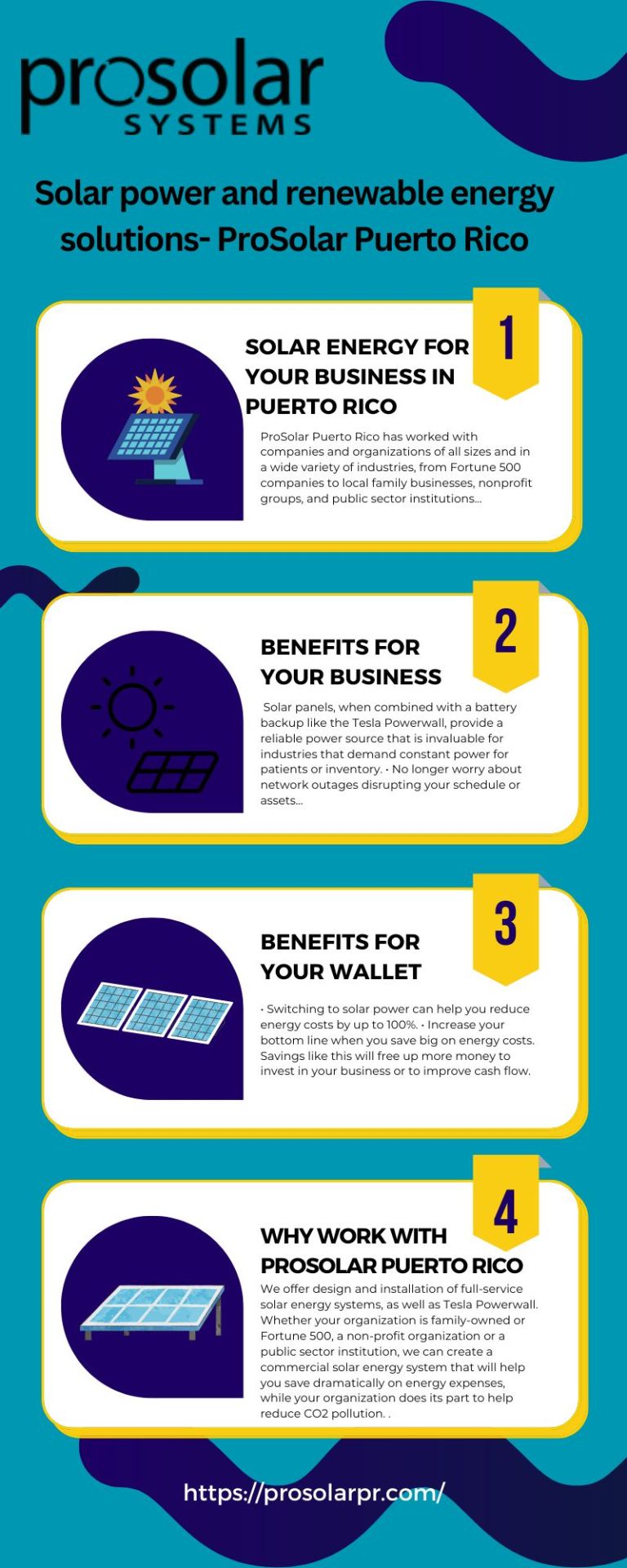
"Switch to Solar Power with ProSolar Systems! Visit prosolarpr.com to light up your future with clean, renewable energy.a
#solar power and renewable energy solutions#solar panel installation for home#puerto rico solar net metering#residential solar panel system#commercial solar energy systems
0 notes
Text
A new study published in the journal Renewable Energy uses data from the state of California to demonstrate that no blackouts occurred when wind-water-solar electricity supply exceeded 100% of demand on the state’s main grid for a record 98 of 116 days from late winter to early summer 2024 for an average (maximum) of 4.84 (10.1) hours per day.
Compared to the same period in 2023, solar output in California is up 31%, wind power is up 8%, and batteries are up a staggering 105%. Batteries supplied up to 12% of nighttime demand by storing and redistributing excess solar energy.
And here’s the kicker: California’s high electricity prices aren’t because of wind, water, and solar energy. (That issue is primarily caused by utilities recovering the cost of wildfire mitigation, transmission and distribution investments, and net energy metering.)
In fact, researchers from Stanford, Lawrence Berkeley National Laboratory, and the University of California, Berkeley found that states with higher shares of renewable energy tend to see lower electricity prices. The takeaway – and the data backs it up – is that a large grid dominated by wind, water, and solar is not only feasible, it’s also reliable.
115 notes
·
View notes
Text
Understanding Capping Net Metering: Maximizing Benefits of Solar Power Net Metering
Dive into the intricacies of net metering and discover how capping net metering can impact your solar power savings. This guide explains the basics of net metering, the benefits it offers, and the implications of introducing caps. Learn how solar power net metering works and explore strategies to maximize your energy efficiency and financial returns in an evolving regulatory landscape.

0 notes
Text
Switchgear for Solar and Wind Projects in Bahrain: What You Need to Know
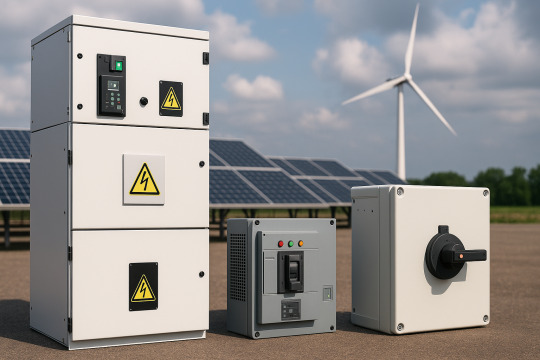
As Bahrain intensifies its commitment to renewable energy, solar and wind power projects are gaining momentum across the Kingdom. The nation’s Vision 2030 emphasizes sustainable growth, and this includes an ambitious target of generating 10% of electricity from renewable sources by 2035. As developers and investors gear up for this energy transition, one component plays a critical role in ensuring system safety, reliability, and efficiency — switchgear.
In this article, we explore why switchgear is crucial in solar and wind power systems, the specific requirements in Bahrain, and how to choose the right solution for your renewable energy project.
What is Switchgear and Why Does it Matter?
Switchgear is a general term covering a wide range of electrical devices used to isolate, protect, and control electrical circuits. It includes circuit breakers, fuses, relays, disconnectors, and load break switches.
In renewable energy systems, switchgear ensures:
· Safe disconnection of faulty or overloaded circuits
· Protection against overcurrent, short-circuit, and earth faults
· Efficient control and monitoring of power flow
· Coordination with grid and off-grid systems
Renewable Energy Growth in Bahrain
Bahrain’s sunny climate and strong coastal winds make it an ideal location for solar PV and wind power installations. Recent government initiatives — such as the Net Metering Scheme, Tendered Renewable Projects, and Green Building Regulations — are creating opportunities for both utility-scale and distributed renewable energy systems.
However, environmental factors such as high temperatures, humidity, and dust pose challenges for electrical equipment, particularly in outdoor solar and wind sites. This makes the right choice of switchgear even more important.
Key Switchgear Considerations for Solar Projects
In photovoltaic (PV) installations, switchgear must be compatible with DC (direct current) as well as AC (alternating current) systems. Here are specific points to consider:
1. DC Switchgear for PV Arrays
· DC Disconnectors: Isolate individual PV strings for maintenance or emergency shutdowns.
· DC Fuses and Circuit Breakers: Protect cables and components from over currents.
· String Combiner Boxes: Integrate multiple PV strings and incorporate protective devices.
2. AC Switchgear for Inverter Output
· Low-Voltage Circuit Breakers (AC): Used between inverters and transformers or grid connection points.
· Load Break Switches: Offer safe disconnection under load conditions.
· Metering and Monitoring Units: Allow real-time tracking of power output and faults.
3. Environmental Protection
· Use switchgear with IP65-rated enclosures to protect against dust and water ingress.
· UV-resistant materials are vital for long-term durability under the Bahraini sun.
Switchgear in Wind Energy Systems
Wind energy systems involve varying voltage levels and require robust protection due to fluctuating wind speeds and mechanical loading. Key switchgear elements include:
1. Medium Voltage Switchgear
· Used for interconnection between wind turbines and step-up transformers.
· SF6 or Vacuum Circuit Breakers: Provide arc quenching and insulation under high voltage.
2. High-Speed Protection
· Wind turbines are sensitive to voltage dips and transients. Fast-acting relays and breakers prevent equipment damage.
· Reactive power control and grid fault detection are integrated into switchgear assemblies.
3. Compact, Modular Designs
· Space constraints inside turbine towers or nacelles demand compact switchgear solutions with modular layouts.
Bahrain-Specific Compliance and Standards
To ensure your switchgear meets local utility and regulatory requirements, consider the following:
· EWA (Electricity & Water Authority) Requirements: All grid-connected systems must comply with EWA’s interconnection standards, including protection schemes and disconnection devices.
· IEC Standards: Switchgear must comply with relevant IEC 60947 (low-voltage switchgear) and IEC 62271 (high-voltage switchgear) guidelines.
· Thermal Rating and Ambient Temperature: Switchgear should be rated for continuous operation at temperatures up to 50°C, common in Bahraini summers.
Choosing the Right Switchgear Partner
A successful renewable energy project hinges on choosing a reliable switchgear partner. Look for:
· Local experience in Bahraini environmental and regulatory conditions
· Customizable solutions for both rooftop and utility-scale systems
· After-sales support including spares, maintenance, and system upgrades
· Smart switchgear with digital monitoring for preventive maintenance and remote control
Future Trends in Switchgear for Renewables
As solar and wind systems grow more advanced, so does switchgear technology. Key trends include:
· Digital Switchgear: Real-time monitoring, predictive maintenance, and IoT integration
· Arc-Resistant Designs: Enhanced safety for personnel in substations
· Eco-Friendly Alternatives to SF6: Adoption of green gases and air-insulated switchgear
· Hybrid AC/DC Systems: With growing battery storage and hybrid plants, switchgear must handle both current types seamlessly
Conclusion
Whether you’re planning a rooftop PV installation or a wind farm in Bahrain, your switchgear solution must be robust, compliant, and tailored to the region’s unique challenges. By choosing the right switchgear system, you ensure operational efficiency, regulatory compliance, and long-term safety.
If you’re looking for expert advice or need help selecting switchgear for your solar or wind project in Bahrain, our team is here to help. Contact us today for tailored solutions that power your progress sustainably.
#electrical engineers#electrical supplies#switchgear#electrical equipment#911 abc#bahrain25#arcane#artists on tumblr#batman#cats of tumblr
3 notes
·
View notes
Text
I wish we had home batteries. Right now, we have a natural gas driven Generac generator, which we purchased years ago. Back then, the disruptions from Commonwealth Edison's electrical feeds were intense, and nobody even thought of storing electricity in home batteries when the lights went out. What's holding us back now is the number of tall, huge, old trees surrounding our house, which shade the roof of our tall (basement, two stories, attic), old (built in 1886) house, making solar energy fairly illogical. Should we cut down the trees to get solar on the roof, or stick with the trees? Easy answer for us: we stick with the trees.
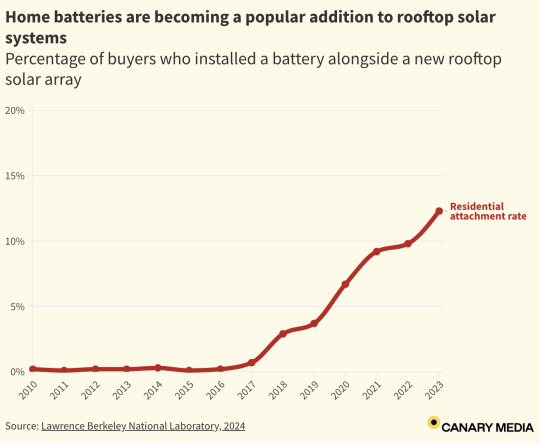
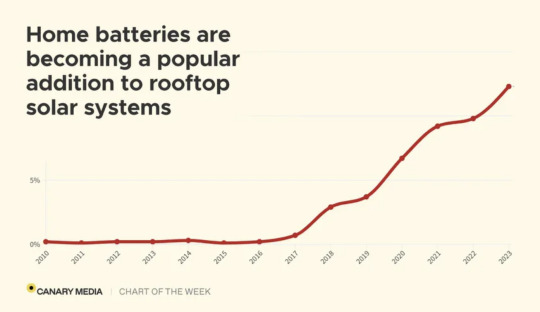
Excerpt from this story from Canary Media:
Batteries are all the rage — especially among homeowners who are going solar.
The percentage of people who install a battery alongside their new rooftop solar system is surging in the U.S., according to a new report from Lawrence Berkeley National Laboratory.
That figure — known as the residential attachment rate — jumped from just under 10 percent in 2022 to 12.3 percent last year. This year, energy research firm Wood Mackenzie estimated that it will soar to 25 percent.
The surging interest in home batteries — which are almost always purchased to store power from solar arrays — comes as the country’s rooftop solar market craters. Installations are expected to fall by 19 percent this year, according to the Solar Energy Industries Association.
Policy changes in California, the nation’s biggest residential solar market by far, have a lot to do with both the contraction of the rooftop solar market and the rising popularity of home batteries. In April of last year, changes to the Golden State’s net-metering program took effect, slashing the rate at which rooftop solar owners could sell surplus power to the grid but boosting the value of batteries, which enable homeowners to save their solar power for the times when it’s most valuable. The attachment rate in California rose to 14 percent last year.
But other factors are driving the uptick in home battery installations as well. Extreme weather events, made more frequent by climate change, are increasingly threatening grid reliability. Batteries are becoming more affordable. And rising utility rates are making the economics of solar-plus-storage more attractive to homeowners.
6 notes
·
View notes
Text
Solar Inverter – The Heart of Every Solar System | Sunsathi Solar
Many think solar panels are the most important part of a solar system, but the real powerhouse is the solar inverter! Sunsathi Solar inverters ensure maximum energy conversion, smart monitoring, and seamless performance with advanced HERIC & TNPC topologies, OLED display, WiFi monitoring, and net metering support. With an IP66 rating and a 10-year warranty, our inverters provide reliability, efficiency, and long-term savings for homes and businesses.
Switch to Sunsathi Solar – Powering a Brighter Future!
Visit here for more information: Sunsathi Solar
2 notes
·
View notes
Text
Thinking About Solar? Here’s Why Residential Solar Systems Are a Game-Changer!
Have you ever looked at your electricity bill and thought, there has to be a better way? Well, there is—residential solar systems! Not only can switching to solar cut your energy bills, but it also helps the environment and increases your home’s value. At Tampa Bay Solar, we’re here to make the transition to solar simple, affordable, and hassle-free.
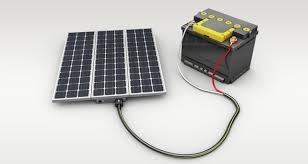
Why More Homeowners Are Choosing Solar Energy
1. Say Goodbye to High Energy Bills
With solar panels for homes, you can generate your own electricity and drastically reduce or even eliminate your energy costs. Plus, with incentives and net metering, your system can actually pay for itself over time!
2. Boost Your Home’s Value
A home with solar power for residential use is more attractive to buyers and can sell for a higher price. Think of it as an investment that not only saves you money now but also adds long-term value.
3. Reduce Your Carbon Footprint
If you’re looking for a way to live more sustainably, renewable energy for homes is one of the best choices. You’ll be using clean, green energy while reducing dependence on fossil fuels—good for you and the planet!
4. Take Control of Your Energy
Relying on the power grid can be unpredictable, with rising costs and potential outages. Solar energy solutions give you more energy independence, providing reliable power when you need it most.
Why Homeowners Trust Tampa Bay Solar
At Tampa Bay Solar, we don’t just install solar panel systems—we help you make the best decision for your home and lifestyle. Here’s why homeowners choose us:
Top-Quality Solar Panels – We use only the best solar energy systems to maximize efficiency and longevity.
Expert Installation – Our experienced team ensures a smooth, professional solar system installation every time.
Customized Solutions – We tailor solar panel installation for homes to fit your energy needs and budget.
Flexible Payment Plans – We offer financing options to make solar energy for your home affordable and accessible.
It’s Time to Make the Switch! ☀️
With government tax incentives and lower solar panel costs than ever before, there’s never been a better time to switch to residential solar energy. Why keep paying for expensive electricity when you can generate your own clean, free power?
Let’s Get Started – Contact Tampa Bay Solar Today! 🌿
Ready to make the switch? Give us a call or visit our website to schedule a free consultation. Our team is here to guide you through every step and answer all your questions about residential solar installation services.
Power your home. Save your money. Protect the planet. Go solar with Tampa Bay Solar!
2 notes
·
View notes